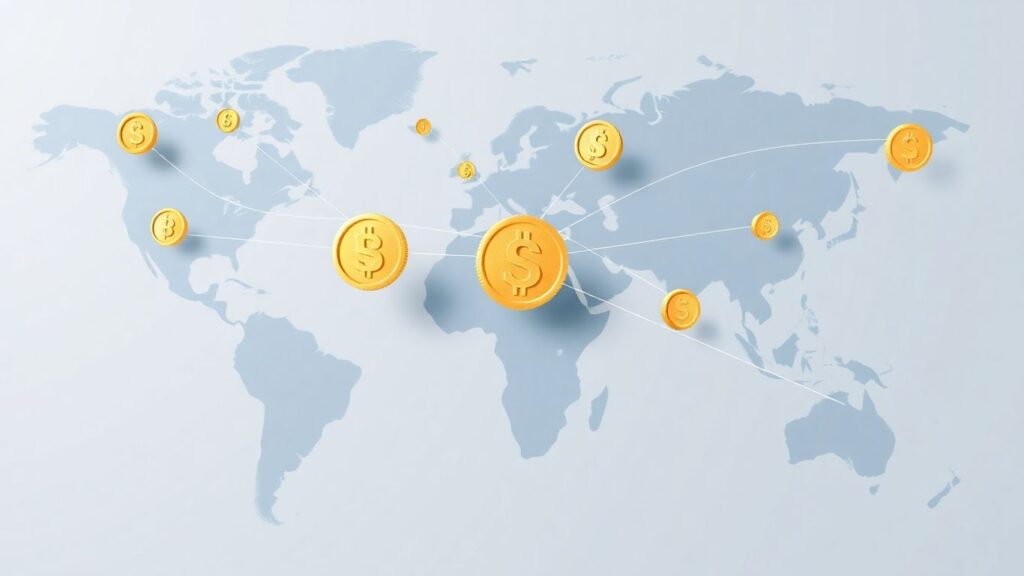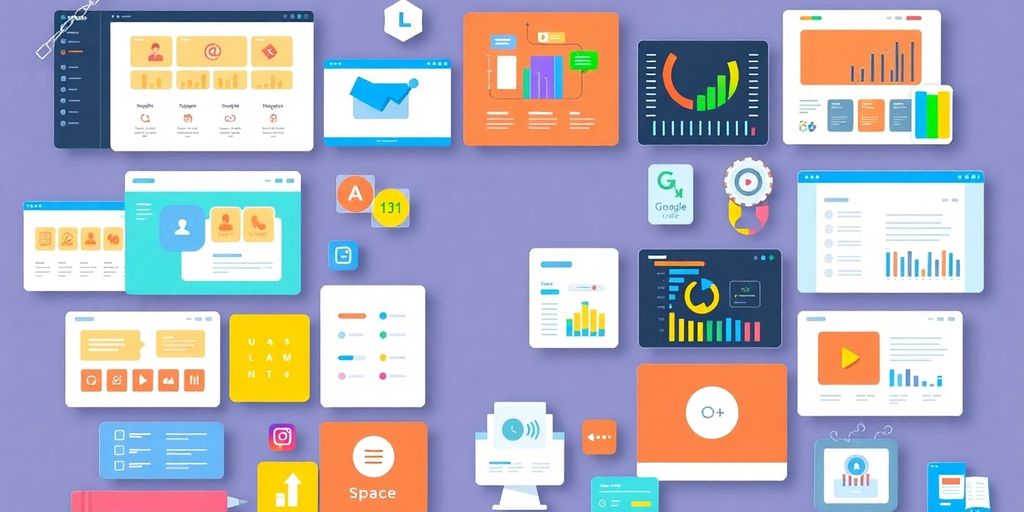Analyzing the Fluctuation of Dutch Oil Imports Over the Past Decade

Over the last ten years, the way the Netherlands gets its oil has changed a lot. We’ve seen all sorts of things impact Dutch oil imports, from big world events to what’s happening right here at home. This article looks at what’s been going on with Dutch oil imports, trying to figure out the main reasons for all the ups and downs.
Key Takeaways
- Dutch oil imports have a long history, with specific events really changing how much oil came in.
- Things like international fights and trade rules have a big effect on where Dutch oil imports come from.
- The price of oil and how much industry needs it at home are big factors for Dutch oil imports.
- New technologies, like better ways to refine oil or new energy sources, are changing the future of Dutch oil imports.
- The Netherlands is working to get its oil from many different places, which helps when supply problems happen.
Understanding the Trajectory of Dutch Oil Imports
Historical Overview of Dutch Oil Imports
Okay, so let’s talk about where the Netherlands gets its oil. For years, the Dutch have relied on oil imports to keep things running. It’s not a new thing. Historically, the Netherlands has been a major player in the oil trade, acting as a key entry point into Europe. This goes way back, and it’s shaped a lot of their economic policies. The story of Dutch oil imports is really a story of adapting to global changes. It’s been quite the ride, with ups and downs depending on what’s happening around the world.
Key Milestones in Import Volume
There have been some pretty big moments that changed how much oil the Netherlands imports. Think of it like this: certain events acted like turning points.
- The oil crisis in the 1970s definitely made a mark.
- Then, the rise of North Sea oil production had an impact.
- More recently, the push for renewable energy is changing things again.
These milestones show how the Netherlands has had to adjust its oil import strategy over time. It’s not just a steady climb; it’s more like a rollercoaster.
Factors Influencing Early Trends
What made the Netherlands start importing so much oil in the first place? Well, a few things played a role. The country’s location is a big deal. It’s right on the coast, which makes it easy to ship oil in. Also, the Netherlands has a lot of industry that needs oil to function.
Early on, the focus was on building up infrastructure to handle large volumes of oil. This meant investing in ports, pipelines, and refineries. The goal was to become a major hub for oil distribution in Europe, and that’s exactly what happened.
Geopolitical Impacts on Dutch Oil Imports

The Role of International Conflicts
International conflicts can really mess with the oil market, and the Netherlands is no exception. When wars or political instability hit oil-producing regions, the supply gets disrupted, and prices jump. Think about it: if a major pipeline gets blown up or a key oil field falls under the control of some rogue group, that oil isn’t making its way to Rotterdam anytime soon. This forces the Dutch to scramble for alternative sources, which can be more expensive or less reliable. It’s a constant balancing act to keep the oil flowing.
Sanctions and Their Effect on Supply
Sanctions are another big headache. When countries slap sanctions on major oil exporters, it can seriously limit the amount of oil available on the global market. For example, if the EU (including the Netherlands) sanctions a country like Iran or Russia, Dutch companies can’t legally import oil from them. This reduces the supply and drives up prices. It’s a delicate situation because while sanctions are meant to punish bad behavior, they can also hurt the Dutch economy.
Shifting Global Alliances and Trade Routes
Global alliances are always changing, and these shifts can have a ripple effect on trade routes and oil imports. If the Netherlands strengthens its relationship with a new oil-producing country, it might start importing more oil from there. Conversely, if relations sour with a traditional supplier, the Dutch might need to find new partners.
These changes aren’t always predictable, and the Dutch government and oil companies need to stay flexible and adapt to the evolving geopolitical landscape. It’s all about diversifying supply sources and building strong relationships with reliable partners.
Here’s a simple breakdown of how these factors can impact Dutch oil imports:
- Conflict: Reduced supply, higher prices, increased instability.
- Sanctions: Limited import options, potential price increases, need for alternative sources.
- Alliances: New trade opportunities, shifts in import patterns, potential for more stable supply.
And here’s a table showing potential impacts:
| Geopolitical Event | Impact on Dutch Oil Imports |
|---|---|
| Major Middle East Conflict | Significant supply disruption, price spikes, search for alternatives |
| Increased Sanctions on Russia | Reduced import volume from Russia, reliance on other suppliers, higher costs |
| New Trade Agreement with Nigeria | Increased import volume from Nigeria, diversification of supply sources, potentially lower prices |
It’s a complex web of factors that all play a role in determining where the Netherlands gets its oil and how much it pays for it. Understanding the Dutch Exit Tax is also important for businesses operating internationally.
Economic Drivers Behind Dutch Oil Imports
Fluctuations in Global Oil Prices
Okay, so when we talk about why the Netherlands imports oil, the first thing that jumps to mind is, of course, global oil prices. It’s pretty simple: when prices are low, it’s more attractive to import. When they spike, things get a bit trickier. The Dutch economy, like any other, reacts to these changes. Big price swings can really mess with budgets and planning.
Domestic Industrial Demand
Another big piece of the puzzle is what’s happening inside the Netherlands itself. How much oil do Dutch industries actually need? If there’s a boom in manufacturing or a surge in the chemical sector, you can bet that oil imports will go up. It’s all about supply meeting demand, but on a national scale. The demand for oil is also affected by the non-oil current account.
Impact of Economic Recessions and Recoveries
Economic ups and downs have a huge impact. During a recession, businesses slow down, people buy less stuff, and the demand for oil drops. Then, when the economy starts to recover, things pick up again. It’s like a rollercoaster for oil imports.
Think about it this way: when the economy is doing well, everyone’s busy, factories are humming, and trucks are on the road. All that activity needs energy, and a lot of that energy comes from oil. But when things get tough, everything slows down, and oil demand takes a hit.
Here’s a simplified look at how economic cycles might affect oil import volumes:
- Recession: Imports decrease by 15-20%
- Recovery: Imports increase by 10-15%
- Boom: Imports stabilize or see slight increases
Policy and Regulatory Influence on Dutch Oil Imports
Government Energy Policies
Okay, so when we talk about government energy policies, we’re really talking about the rules of the game. These policies can seriously impact how much oil the Netherlands imports. Think about it: subsidies for renewable energy, taxes on fossil fuels, and mandates for blending biofuels all play a role. These policies aren’t static; they change with governments and evolving priorities. For example, a push for energy independence might lead to policies that discourage oil imports, while a focus on economic growth could lead to policies that ensure a steady and affordable supply. It’s a constant balancing act.
Environmental Regulations and Import Quotas
Environmental regulations are a big deal. They’re not just about being green; they directly affect the oil industry. The Netherlands, like other EU countries, has to meet certain environmental standards. This can mean things like:
- Stricter emission standards for vehicles and industries.
- Regulations on the sulfur content of fuels.
- Potential import quotas on certain types of crude oil.
These regulations can increase the cost of importing and refining oil, which can then affect the overall volume of imports. It’s a push and pull between environmental goals and economic realities. The environmental regulations are constantly evolving, so the oil industry has to adapt.
Trade Agreements Affecting Dutch Oil Imports
Trade agreements are another key piece of the puzzle. The Netherlands is part of the EU, so it benefits from the EU’s trade deals with other countries. These agreements can lower tariffs and other barriers to trade, making it cheaper and easier to import oil from certain sources. However, they can also create winners and losers. For example, a trade deal with a major oil-producing country could increase imports from that country, while potentially reducing imports from other sources. It’s a complex web of international relations and economic interests.
The EU’s trade policy is a big factor. It sets the stage for the Netherlands’ oil import landscape. Changes in these agreements can lead to shifts in import patterns, affecting both the volume and sources of oil. It’s a dynamic situation that requires constant monitoring and adaptation.
Technological Advancements and Dutch Oil Imports

Refinery Capacity and Efficiency
Dutch refineries have been working hard to keep up with the times. It’s not just about processing more oil, but doing it smarter. Upgrades in technology mean they can get more out of each barrel, reducing waste and boosting overall efficiency. This has a direct impact on how much crude oil needs to be imported, as better refineries can meet demand with less raw material.
Emergence of Alternative Energy Sources
The rise of alternative energy is changing the game. Solar, wind, and other renewables are becoming more common, and that means less reliance on oil. The Netherlands is investing in these technologies, which could lead to a drop in oil imports over time. It’s a slow shift, but it’s happening.
Here’s a quick look at the growth of renewables:
- Increased solar panel installations on homes and businesses.
- Expansion of offshore wind farms.
- Government incentives for renewable energy projects.
Innovations in Oil Transportation
Getting oil from point A to point B is a big deal, and any improvements can make a difference. New pipeline tech, better ships, and smarter logistics all play a role. These innovations can lower transportation costs and reduce the risk of spills, making the whole process more efficient. It’s all about moving oil safely and cheaply.
The push for greener solutions is also influencing transportation. We’re seeing more interest in biofuels and electric-powered transport options, which could further reshape the oil import landscape.
Analyzing Supply Chain Dynamics for Dutch Oil Imports
Diversification of Import Sources
Okay, so when we talk about where the Netherlands gets its oil, it’s not like they’re relying on just one place. The Dutch have been working to spread out their sources for a while now. This is smart because if something goes wrong in one country – political stuff, natural disasters, whatever – it doesn’t completely mess up their oil supply. They get oil from Russia, Norway, Saudi Arabia, and the UK, among others. It’s like not putting all your eggs in one basket, you know?
Logistical Challenges and Infrastructure
Getting the oil to the Netherlands isn’t always easy. Think about it: you’ve got ships, pipelines, and storage tanks all working together. Rotterdam is a huge port, and it handles a lot of oil, but there are still challenges. Sometimes there are delays because of weather, or maybe there’s a bottleneck at a refinery. Plus, keeping all that infrastructure in good shape costs money. It’s a constant balancing act to make sure everything runs smoothly.
Here’s a quick look at some of the infrastructure involved:
- Port of Rotterdam (major entry point)
- Extensive pipeline network
- Large storage facilities
- Refineries located strategically
Impact of Supply Disruptions
Stuff happens, right? Sometimes there are problems that mess with the oil supply. It could be a strike at a refinery, a hurricane in the Gulf of Mexico, or even political tensions between countries. When these things happen, it can cause the price of oil to go up, and it can make it harder for the Netherlands to get the oil it needs. That’s why it’s so important to have those backup plans and diverse sources we talked about earlier.
Supply disruptions can have a ripple effect, impacting not only the availability of oil but also the prices consumers pay at the pump. The Dutch government and industry are constantly working to mitigate these risks through strategic reserves and international cooperation.
Future Outlook for Dutch Oil Imports
Projections for Demand and Supply
Okay, so trying to figure out where Dutch oil imports are headed is like trying to predict the weather – lots of educated guesses. Demand is a big question mark. Will industries keep needing as much, or will they find other ways? Supply is just as tricky. Will current sources stay reliable, or will something change? It’s a balancing act, and honestly, anyone who says they know for sure is probably selling something.
The Transition to Renewable Energy
Here’s the deal: Renewable energy is the elephant in the room. The Netherlands, like everyone else, is trying to go green. More wind farms, more solar panels… you know the drill. The big question is how fast this transition will happen. If it’s quick, oil imports could drop like a rock. If it’s slow, well, things might not change that much. It’s a race against time, and the outcome will shape everything.
Potential for New Trade Partnerships
Who the Netherlands gets its oil from could look very different in the future. Maybe they’ll find new buddies to buy from, or maybe old relationships will get stronger. It all depends on what’s happening around the world.
It’s worth keeping an eye on how these partnerships evolve, because they can really shake things up. If the Netherlands starts getting oil from somewhere totally new, it could change the whole game.
Here are some factors that could influence new partnerships:
- Changes in global politics
- New oil discoveries
- Shifting trade agreements
Conclusion
So, what’s the big takeaway from all this oil talk? Well, looking back at the last ten years, it’s pretty clear that Dutch oil imports have been on a bit of a roller coaster. We’ve seen some ups, some downs, and definitely some unexpected turns. It’s not just about how much oil came in, but also where it came from and why those changes happened. Things like global events, new policies, and even just what people needed at home all played a part. It really shows how connected the world is, and how even a small shift somewhere can ripple out and change things for a country like the Netherlands. It’s a complex picture, for sure, and it’ll be interesting to see what the next decade brings.
Frequently Asked Questions
How much has Dutch oil import changed in the last 10 years?
Looking back over the last ten years, the amount of oil the Netherlands brought in changed a lot. Sometimes it went up, and other times it went down. These changes were often due to big world events, money problems, or new rules about the environment.
How do world events affect Dutch oil imports?
Things happening around the world, like fights between countries or new rules about who can trade with whom, really mess with how much oil the Netherlands can get. If a country that sells oil has problems, it can make it harder for the Netherlands to buy it.
What economic factors influence Dutch oil imports?
When the price of oil goes up or down, it changes how much the Netherlands imports. Also, if factories in the Netherlands are busy, they need more oil. But if the economy is slow, they need less.
Do government rules impact how much oil the Netherlands imports?
The Dutch government has rules about energy and the environment. These rules can make it so the Netherlands imports less oil, especially if they want to use more clean energy. Trade deals with other countries also play a big part.
How do new technologies affect Dutch oil imports?
New ways to make oil into fuel more efficiently, or finding new energy sources like solar or wind power, can mean the Netherlands needs to import less oil. Better ways to move oil around also help.
What’s the plan for Dutch oil imports in the coming years?
In the future, the Netherlands might try to get oil from more different places so they don’t rely too much on just a few. They also want to use more clean energy, so they might need less oil overall. They could also make new friends to trade oil with.








Responses